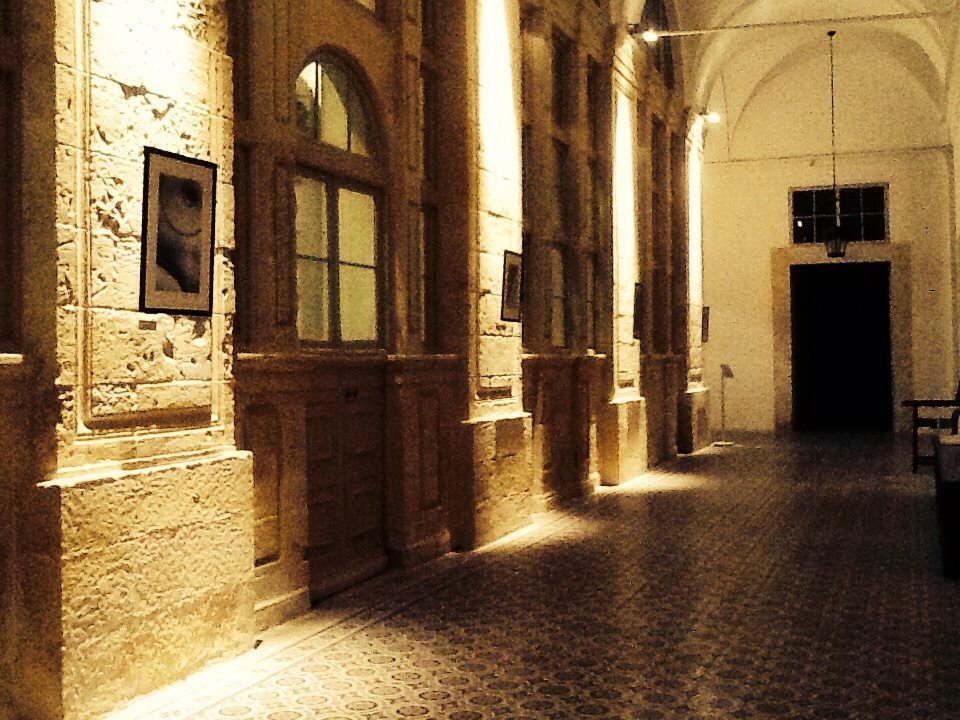

A solo exhibition Bodies of Text will be opening on 12th October at Carmelite Priory Mdina. In these works Gordon Pace Flores combines the organic form of human body with that of text – exploring the geometry of the body, with the flow of text following along or contrasting with the natural contours of the body. The works treat the theme using a combination of calligraphy and photography – calligraphy superimposing photos of details of the human body.
The opening of the exhibition will be on Saturday 12th October 2013, starting at 19:30.
Texts are spoken of as bodies, bodies are read and explored as if they were texts. Bodies and texts are appearances, forms re-presenting categories of being. Pace’s masterful aesthetic expression of the existent interconnection between “bodies”
and “texts” entices the viewer to make his or her way through the captured body parts and the surrounding text of the alphabet. Gazing at this photo-graphic collection the viewer automatically starts to navigate in a labyrinth made up of parts. There is a connection between the photographed parts of the body (ies?) and the particular letters of the alphabet: meaningless “signs” ready to be clothed in meaning. Meaning is given to “bodies of text” not by assembling the parts into a whole but rather by a transcendence of the “form”. Meaning does not reside statically in the photo-graph, but awakens from an encounter; a triadic encounter (artist-work-viewer) which opens up for a myriad of meanings.
Gordon’s aesthetic expression echoes Origen’s hermeneutic approach (drawn from Plato, Cicero, Philo and Pantaneus) and allegorical method in relating to the body (corpus) of inspired texts (in his case Biblical). Origen insists that in reading and exploring a textual corpus one has to delve deeper, transcending the text itself, to behold the underlying spirit. Allegory, is “other speech” implying that when a writer – or artist – expresses one thing something deeper is being implied. Literary Criticism indicates that narrative elements stand for something other than what these is visibly narrated. The [graphic] narrative therefore encourages interpretation in order to uncover what the other meaning may be. Theorists (from classical times) understand allegory as being polysemous, having multiple meanings. Understanding requires an ascetical capacity (effort) to move beyond the literal (seen/evident) to the mystical or spiritual (unseen/unevident). In this process the textual corpus becomes self-illuminating. “Bodies of text” faces us with harmonious brokenness of bodies enhanced by alphabetic motifs (in themselves bodies of fragments) which serve as a backdrop or trailing upon the body parts. To use Michel de Certeau’s theory, each image awaits de-scription. Only when bodies are broken, spiritual experience flourishes in the quest for meaning. “Bodies of texts” is perhaps an invitation to process into beholding-creating meaning through observation of the parts, recognised in the whole and the whole present in each part. Once we process therein we are compelled to express meaning through de-scriptive textuality: the creation of texts from the alphabetic body of fragments, a process encapsulating progression from contemporary primitivism /tribalism towards a new culture.
The intriguing elements composing “Bodies of text” – nakedness, alphabet, sensuous body parts – exhibited in the harmoniously austere cloister enhance the dialogic process of integrating the rudimentary, fragmented and disconnected forms into a meaningful whole. The cloister (from the Latin claustrum), a garden enclosed, as an allegory of the soul-bride who searches for integrity and wholeness through focusing on the Beloved, is conducive to arrive at a meaningful and comprehensive perception of existence.
Charlò Camilleri, O.Carm.
Go Ahead, Leave A Comment